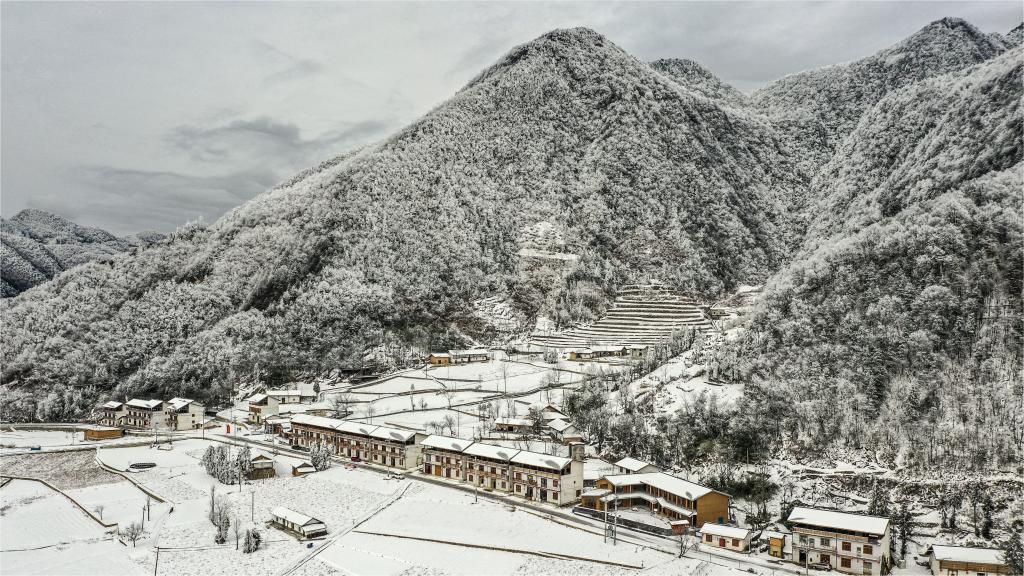Paleolithic site found in SW China
CHENGDU, Jan. 30 (Xinhua) -- The Mengxihe Site in Lezhi County in the city of Ziyang, southwest China's Sichuan Province, was announced as one of the six most important archaeological findings of 2023 in China on Tuesday, according to the Sichuan Provincial Institute of Cultural Relics and Archaeology.
The Mengxihe Site, dating back 50,000 to 70,000 years, has preserved a number of organic matter remains including animal fossils, ebony and plant seeds.
A flood in the summer of 2019 unearthed ebony and animal fossils that had been buried underground for tens of thousands of years, as well as some stone tools used by ancient humans, said Zheng Zhexuan, an archaeologist at the institute.
Under the guidance of China's State Administration of Cultural Heritage, the Sichuan Provincial Institute of Cultural Relics and Archaeology and the Institute of Vertebrate Paleontology and Paleoanthropology of the Chinese Academy of Sciences carried out a rescue archaeological excavation at the site for about two years, initially exposing the appearance of the site, and found 11 interrelated sites along the Mengxi River, forming the Mengxihe Site group.
The preliminary analysis shows that the Mengxihe Site was formed by ancient humans living near the water, and the cultural layer is distributed below the current water level of Mengxi River, which is a special water-saturated burial environment and can retain a lot of organic materials.
In 2023, more than 105,000 stone tools, wood tools, bone tools and animal fossils, as well as more than 60,000 relics such as plant seeds, fruits and spores were unearthed. Traces of fire, cutting, carving and polishing left by ancient human behavior were also found.
A large number of organic cultural relics have been preserved in Mengxihe Site. There are more than 30 kinds of animal remains, including elephants, rhinoceros, bears, cattle, deer, macaques, fish, turtles, snakes, frogs, birds, porcupines, bamboo rats, to name a few, with a complete range of large, medium and small animals, water, land and air, carnivores and herbivores, Zheng said.
More than 30 families of plant seeds and fruits such as trees, fruits, seeds and gemmae have been found in the remains of plants, and several Sambucus thunbergiana have been found, indicating that ancient humans may have used herbs to treat injuries, Zheng added.
In addition, the abundant animal and plant resources found also provide us with valuable materials for in-depth understanding of the environment and climate at that time, according to Zheng.
Mengxihe Site has rarely restored a three-dimensional Paleolithic society scene, which is a major discovery in multiple disciplines and fields. Rich flora and fauna remains will also assist the research in paleophyte, environment, climate and dendrochronology in China.
Photos
Related Stories
- Over 2,000-year-old trench-enclosed tombs discovered in Inner Mongolia
- New findings unveil stone processing practices of China's Liangzhu civilization
- Archaeologists discover ancient pottery workshop in China's Shaanxi
- New finds in China's Guizhou indicate prehistoric human activity over 55,000 years ago
- Tombs dating back to 4th century discovered in China's Shaanxi
- New archaeological sites found in east China
Copyright © 2024 People's Daily Online. All Rights Reserved.









